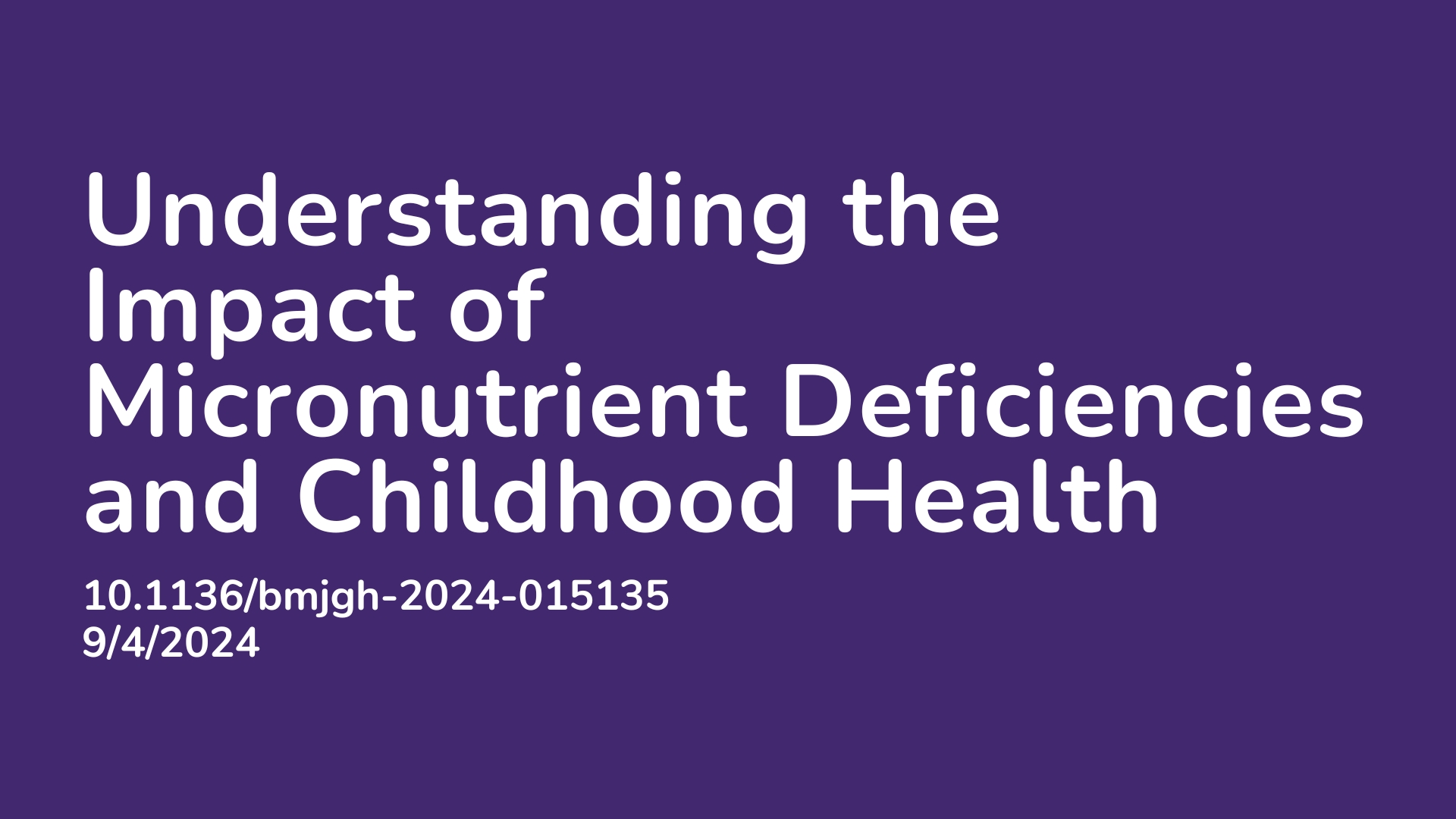Summary:
Micronutrient deficiencies are linked to impaired immune function, poor growth, and increased morbidity and mortality in children. WHO and UNICEF strongly advocate for public health strategies like supplementation and fortification in low- and middle-income countries. Despite efforts, the global prevalence of micronutrient deficiencies in children under 5 is approximately 56%. Iron, zinc, and vitamin A deficiencies persist, impacting child health globally. Micronutrient deficiencies were traditionally viewed as forms of undernutrition, but they also occur in overweight and obese individuals. Childhood obesity, often linked to poverty, is rising, creating a “triple burden of malnutrition” in many low- and middle-income countries. This study reviewed associations between iron, zinc, and vitamin A status and body weight in children and young people, aiming to identify links between micronutrient status and obesity. The researchers identified 190,443 participants from 44 countries and found that overnutrition (overweight and obesity) increased the odds of iron deficiency. Odds were notably higher among children living with obesity compared to those with overweight. An association between zinc and vitamin A deficiencies and overweight and obesity was not observed.
Abstract:
Introduction: Traditionally associated with undernutrition, increasing evidence suggests micronutrient deficiencies can coexist with overnutrition. Therefore, this work aimed to systematically review the associations between iron, zinc and vitamin A (VA) status and weight status (both underweight and overweight) in children and young people. Methods: Ovid Medline, Ovid Embase, Scopus and Cochrane databases were systematically searched for observational studies assessing micronutrient status (blood, serum or plasma levels of iron, zinc or VA biomarkers) and weight status (body mass index or other anthropometric measurement) in humans under 25 years of any ethnicity and gender. Risk of bias assessment was conducted using the American Dietetic Association Quality Criteria Checklist. Where possible, random effects restricted maximum likelihood meta-analyses were performed. Results: After screening, 83 observational studies involving 190 443 participants from 44 countries were identified, with many studies having reported on more than one micronutrient and/or weight status indicator. Iron was the most investigated micronutrient, with 46, 28 and 27 studies reporting data for iron, zinc and VA status, respectively. Synthesising 16 records of OR from seven eligible studies, overnutrition (overweight and obesity) increased odds of iron deficiency (ID) (OR (95% CI): 1.51 (1.20 to 1.82), p<0.0001, I2=40.7%). Odds appeared to be higher for children living with obesity (1.88 (1.33 to 2.43), p<0.0001, I2=20.6%) in comparison to those with overweight (1.31 (0.98 to 1.64), p<0.0001, I2=40.5%), although between group differences were not significant (p=0.08). Conclusions: Overnutrition is associated with increased risk of ID, but not zinc or VA deficiencies, with an inverted U-shaped relationship observed between iron status and bodyweight. Our results highlight significant heterogeneity in the reporting of micronutrient biomarkers and how deficiencies were defined. Inflammation status was rarely adequately accounted for, and the burden of ID may well be under-recognised, particularly in children and young people living with overnutrition.
Article Publication Date: 9/4/2024
DOI: 10.1136/bmjgh-2024-015135



